How the New Multi-Party Patent Infringement Rulings Will Affect Pharmaceutical Treatment Claims
By: Brian T. Moriarty, Deirdre E. Sanders, and Lawrence P. Cogswell III, Ph.D.
Hamilton Brook Smith Reynolds Alert
The very recent and continuing focus by the U.S. Supreme Court and the Federal Circuit sitting en banc on multi-party infringement issues – namely, induced infringement and divided, or joint, infringement – portends daunting new challenges for brand pharmaceutical companies that attempt to assert method of treatment claims in Hatch-Waxman litigation against generic competitors. The new case law on divided infringement requires an analysis of the specific nature of the relationship among the alleged joint infringers to determine if there is a principal-agent relationship, or a similar relationship, among them. Under new Supreme Court precedent on induced infringement, the subjective intent of the alleged inducer of infringement is now an element of the induced infringement analysis. For example, to prove infringement of a method of treatment claim (e.g., administering a drug to a patient with a specific diagnosis), brand companies may now have to present proof of conduct by multiple parties (e.g., doctors and patients) and show that the generic induced the direct infringement by the doctor and patient.
These new heightened challenges are particularly daunting for the Hatch-Waxman plaintiff because in those cases the infringement analysis is based upon an assumed, or hypothetical, set of facts. When the currently evolving, and fact-intensive, standards for multi-party infringement and inducement are grafted onto this hypothetical inquiry, potentially insurmountable burdens emerge for brand pharmaceutical companies attempting to prove infringement at the Hatch-Waxman stage. It may be difficult or impossible to prove both the “control” relationship and the subjective intent on a hypothetical basis before an act has occurred. Indeed, such highly speculative analysis as to the exact relationship among joint infringers and the alleged inducer’s subjective intent may offend the “case or controversy” requirement of the U.S. Constitution.
These developments may undermine the balance Congress struck in enacting the Hatch-Waxman amendments and provide additional room for strategic maneuvering by brands and generics alike. For example, a brand could choose to litigate only compound and formulation claims during the Hatch-Waxman ANDA pre-approval stage but not assert method of treatment claims if they are not ripe. As a result, brands would be able to engage in a second round of patent litigation once the generic launched its product without running afoul of the “entire controversy” rule requiring that all related matters be litigated at the same time. On the other hand, if a method of treatment patent is the last patent standing and the key to maintaining a lawful monopoly, the brand’s potential inability to litigate the matter due to the lack of a case and controversy prior to the generic’s actual launch of a product may result in more generic drug companies launching products earlier and risking damages awards.
Hatch-Waxman and the Hypothetical Analysis
In Hatch-Waxman litigation, infringement cases are filed before the alleged infringing product is sold. Consequently, the infringement analysis is based on an assumed or hypothetical set of facts. The Federal Circuit ruled “[t]he relevant inquiry is whether. . . the alleged infringer will likely market an infringing product. What is likely to be sold, or, preferably, what will be sold, will ultimately determine whether infringement exists.” Similarly, “the substantive determination whether actual infringement or inducement will take place is determined by traditional patent infringement analysis, just the same as it is in other infringement suits, including those in a non-ANDA context, the only difference being that the inquiries now are hypothetical because the allegedly infringing product has not yet been marketed.” This entails first envisioning conduct by persons who have not yet acted and who are not party to the lawsuit (e.g., the future doctor and patients that are likely to use the generic’s drug once the FDA approves the ANDA). It then entails the patentee showing that the generic company will, in the future, intend to induce this direct infringement.
However, because the U.S. Constitution confers jurisdiction only where there is an actual “case or controversy,” the hypothetical inquiry must be grounded on known facts and a solid footing. Courts have cautioned that Section 271(e)(2) of the Hatch-Waxman amendments “does not encompass ‘speculative’ claims of infringement.” One, perhaps prescient, district court held that the attempt to divine the future intent of the generic drug company in selling a yet-to-be-marketed product was so speculative that it violated the Constitutional “case or controversy” requirement (the decision, which did not touch on joint infringement, was reversed).
When the patent covers a method of use claim, or a method of treatment claim, the hypothetical approach requires several layers of analysis. First, because a generic drug company does not administer drugs, it can normally only be sued as an indirect infringer that has induced infringement. To prove induced infringement, a patent holder must first show an act of underlying direct infringement by another. Further, because method of treatment claims often are structured so that no single entity performs all of the steps of the method, e.g., with doctors performing some steps, and patients performing others, there cannot be a finding of infringement, unless the standards for “joint infringement” are met. Until very recently, the standards for joint infringement were fairly fuzzy, and allowed a finding of joint liability where the infringing actors were working in concert to infringe.
Exemplifying this old approach, a district court in New Jersey recently found direct infringement even though no single actor performed all the steps of the method of use claim. Even though it found that some steps of the method of treatment claim were performed by a doctor (diagnosing) and others were performed by a patient (administering), it declined to analyze the allegedly infringing conduct of the doctor and the patient separately. Instead, with almost no support, except perhaps a nostalgic view of the doctor-patient relationship, the court stated that “the actions of doctors and patients will be treated together, and will be considered directly infringing.” This ruling is typical of the manner in which courts have refused to parse the nature of the relationship between the doctor and patient, or between the patient and other medical practitioners such as nurses and pharmacists.
Likewise, the district court, like many others, did not attempt to determine whether the generic companies would, in the future, possess an actual, subjective intent to infringe, stating that intent to induce “is determined from an objective viewpoint.” Indeed, to date, courts have focused only on objective manifestations of intent, such as advertising material and label instructions, while the alleged inducer’s own mindset – for example, a sincere belief based on an opinion of counsel that there could be no direct infringement and, therefore, no induced infringement – was not considered.
Impact of the Changing Standard for Divided Infringement
These standards of joint, or divided, infringement, have recently changed and will likely be modified again very soon because the Federal Circuit has taken up the issue presently in two en banc hearings – Akamai v. Limelight and McKesson v. Epic.
In Akamai, the patent claimed a system of remote storage for Internet content. Unfortunately for the patentee, the patent claim did not focus on the conduct of one actor. Instead, the claim required one step to be performed by a customer and the remaining steps, by a service provider. Akamai argued that the customers had a sufficiently close contractual relationship with the service provider to view the conduct as occurring in concert. Akamai pointed out that the service provider provided instruction for use to the customers and the service provider and the customers were working together. The court rejected this loose “in concert” standard. The court also rejected a test for joint infringement that looked to equitable considerations such as to whom the benefits from the joint infringement flowed. Instead, the court looked to the law of agency and held as a matter of law that there can be joint infringement only when there is either an agency relationship between the parties who perform the method steps or where one party is contractually obligated to the other to perform the steps also known as the “mastermind” or “controlling party” test.
In McKesson, the patent claimed a system that allowed patients and doctors to communicate medical, scheduling, and insurance information. Again, and unfortunately for the patentee, the claims did not focus on the actions of one party, but instead required the patient to perform one step and the service provider (the doctor’s office) to perform the remaining steps. McKesson, the patent holder, did not try to meet the new principal-agent or “mastermind” tests of Akamai, but, instead, argued that the relationship between the doctor and the patient was so close and special that the doctor and patient should be viewed as one entity. According to McKesson, “[t]he phrase ‘doctor's orders’ says it all.” The Federal Circuit rejected the argument: “This argument misses the mark. A doctor-patient relationship does not by itself give rise to an agency relationship or impose on patients a contractual obligation such that the voluntary actions of patients can be said to represent the vicarious actions of their doctors.”
Both the Akamai and McKesson opinions have been vacated by the Federal Circuit sitting en banc. The court will now, as a whole, take up the question of the proper standard for judging infringement when more than one party performs the steps in a method claim (or other claim). While the exact contours of the joint infringement analysis are not yet clear, judging from the number of judges who have agreed to a more stringent agency-based (or similar) test in various opinions, it can be expected that some type of “mastermind” or “principal-agent” test will emerge from the en banc decision. At a minimum, the court is expected to rule that joint infringement will require a detailed factual analysis of the relationship between alleged joint infringers. This will pose a significant burden for method of treatment patentees, who will need to make such a showing on ahypothetical basis during ANDA litigation.
The New Subjective Intent Standard for Induced Infringement
Significantly, at the very same time the Federal Circuit is undertaking to review and restate the law of joint infringement, the Supreme Court just issued an opinion, Global Tech v SEB, clarifying and restating the law of induced patent infringement.
The statute for active inducement of patent infringement, 35 U.S.C. § 271(b), provides that “[w]hoever actively induces infringement of a patent shall be liable as an infringer.” The Court observed that the statutory words show that “at least some intent is required,” even though there is no similar requirement to prove direct infringement. The Court found the statute ambiguous, but held that liability for active inducement of patent infringement requires knowledge that the induced acts constitute patent infringement. The Court spelled out its holding in detail: “we now hold that induced infringement under § 271(b) requires knowledge that the induced acts constitute patent infringement.” Note that the holding is not that the alleged infringer merely knew of the existence of the patent, but, rather, that it knew that the induced acts “constitute patent infringement.” The Supreme Court also ruled that a showing of “willful blindness” by the defendant could substitute for actual knowledge.
The Supreme Court observed that the knowledge requirement is based on what the defendant “subjectively believes.” For example, in applying the “willful blindness” test, the Court stated that the defendant “subjectively believed there was a high probability that [the product it copied] was patented and that [the defendant] took deliberate steps to avoid knowing that fact, and that it therefore willfully blinded itself to the infringing nature of [its customer’s] sales.” While the exact parameters of the intent or knowledge requirement will need to be further developed, it is clear that the standard for inducement is based on the actual subjective knowledge or intent of the alleged induced infringer and not based on an “objective” intent.
Implications for Pharmaceutical Method of Treatment Patents in ANDA Cases
The first battle that will now be waged with method of treatment claims is claim construction. The brand will argue that all steps in a method of treatment claim can be performed by one actor. Generics will take the opposite view and argue that the method claims will require more than one actor, such as a doctor performing a diagnosis, a pharmaceutical supplying the drug and a patient or nurse administering the drug. Consider a typical method of treatment claim: “A method of treating ADHD comprising administering to a patient in need of such treatment an effective amount of [a drug].” The generic would likely argue that the treating step of the claim is performed by a doctor and the administering step is performed by the patient, e.g., by simply swallowing a pill. The brand might argue, for example, that the entire action is performed by a patient who takes a pill for treatment after becoming aware (by the doctor) of a need to be treated.
There are many other permutations of method of treatment claims. Suffice it to say that while each side has an argument, there will likely be many claims that will be construed to require more than one actor to infringe. Under developing case law for joint infringement, the patentee would need to show on a hypothetical basis that these actors are in a “control relationship” such that one actor – the mastermind – is directing the activities of another. If that relationship is solely a doctor-patient relationship, it is unlikely that a showing of direct infringement can be made because the Federal Circuit currently views such relationships as voluntary and not a principal-agent control relationship or a contractual relationship.
It may be very difficult to even begin to undertake this analysis of a control relationship on a hypothetical basis, when small factual points can make the difference between a finding of control or agency and a finding of no control or no agency and there are myriad variations on how a drug can be administered. The new standard for joint infringement suggests that future hypothetical infringement analyses of a future relationship between unknown actors may, at times, be highly speculative. As such, method of use claims may not even be justiciable at the Hatch-Waxman stage because the required speculative analysis may, in some instances, run afoul of both the Constitution’s “case or controversy” requirement and present case law that prohibits unduly speculative hypothetical analyses of Hatch-Waxman patent claims.
Compounding these significant problems is the further requirement that the brand will need to prove induced infringement. The brand will have to show that the generic had knowledge or a subjective belief that the induced acts – which have yet to occur and may never occur – would constitute patent infringement. Because induced infringement requires a finding of the subjective intent of the infringer, it may be impossible to show such an intent at the Hatch-Waxman stage prior to product launch because intent, which can change over time, is usually measured by conduct that occurs at launch or in relation to a specific drug launch program, not years before any plan is developed to launch a drug.
Suggestions to Maximize Your Position Under these Changes in Law
For brands, the first step is to undertake a review of existing and pending patent claims. Method of treatment claims should be written such that all steps can be performed by one actor – presumably the patient or the person administering the drug. Brands should also consider seeking to reissue suspect claims or filing continuation applications to refine the invention such that claims can be performed by one and only one actor. For new inventions, prosecutors will need to take great care in preparing the specification to provide support for interpreting the methods to require conduct by one actor. They should avoid providing examples and written descriptions that establish that the claimed methods of treatment are performed by more than one actor. Moreover, they should avoid statements in the prosecution history which support a claim construction requiring multiple actors.
Once in litigation, brands should focus on claim construction efforts to avoid divided infringement problems, and should seek evidence establishing a subjective intent to induce infringement and evidence establishing an agency or contractual relationship between or among the potential actors. Brands might also give thought to not asserting method of treatment claims during the initial litigation and waiting until the generic has taken significant steps to launch its product to seek equitable judicial relief.
Generics should be sure to develop claim construction positions and evidence that will lead to a claim construction that requires that multiple actors perform the steps of a method claim. Likewise, generics should take steps to avoid the imputation of a subjective intent to induce infringement by possibly obtaining opinions of counsel and emphasizing to the presiding court that it is industry practice to not finalize launch plans until several years after filing an ANDA, therefore, showing a lack of any specific intent to induce infringement. A generic might even seek to develop evidence of the highly speculative nature of the adjudication of the method of treatment claims in order to seek dismissal based on a lack of subject matter jurisdiction (no case or controversy) or on grounds that the inquiry is impermissibly speculative, increasing the possibility that it can launch its product prior to patent expiry. The ANDA filer would also be wise to strive to develop a full record of the potentially speculative nature of the lower court’s inquiry to preserve that issue for appeal, if needed.
In sum, the courts’ clarification of the law of joint infringement and changes in the law of induced infringement will cause upheaval in the litigation of method of treatment claims, and other types of claims, in Hatch-Waxman litigation. Brands and generics should keep close watch on the evolving case law in these areas.






